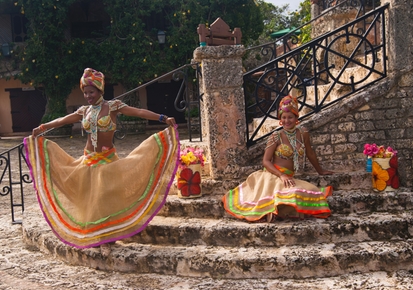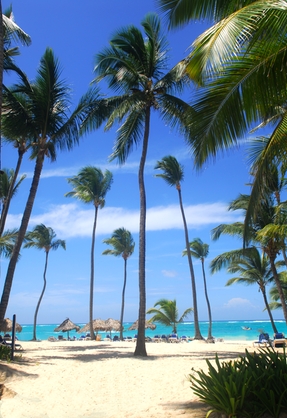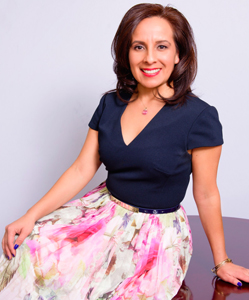A Brief History
 This country is located on the Island of Hispaniola (Greater Antilles), which is in the Caribbean area. Haiti occupies the western third of this island; thus, making this an island shared by two countries. Following Cuba, the Dominican Republic is the second biggest Caribbean nation. As Christopher Columbus landed here in 1492, Santo Domingo became the first settlement and thus was named Spain’s first capital within the New World. The Spaniards dominated this island with the exception of the French who dominated the western tip. By 1795, however, Spain gave the Dominican Republic to France and they then became the official ruling body to this region.
This country is located on the Island of Hispaniola (Greater Antilles), which is in the Caribbean area. Haiti occupies the western third of this island; thus, making this an island shared by two countries. Following Cuba, the Dominican Republic is the second biggest Caribbean nation. As Christopher Columbus landed here in 1492, Santo Domingo became the first settlement and thus was named Spain’s first capital within the New World. The Spaniards dominated this island with the exception of the French who dominated the western tip. By 1795, however, Spain gave the Dominican Republic to France and they then became the official ruling body to this region.
The Taino people inhabited this region since the 7th century, but quickly began to die out as the island was colonized by outsiders and diseases were brought into the country. To replace the dying Taino workers, African slaves were brought in by ships to the island. This eventually swelled the population of Africans living in this region. As a result, the Dominican Republic now has many descendents that are of Spanish, French, Arawak, and African origin living on this island. The customs and traditions of this island are unique to the Dominican Republic because of the outside influences that helped to populate and develop this nation.
In 1821, the Dominican Republic became an independent nation and was ruled by a colonial judge, Jose Nunez de Caceres. Slavery and limited rights for the black populations still remained. Eventually he was removed by the Haitian government and the slave revolts. Over the next 72 years, Dominicans experienced some peace, a short return to Spanish rule, and then U.S. occupation. In 1965, civil unrest permeated the region and eventually authoritarian rule succeeded. The Dominican Republic is slowly moving towards a more democratic society but still has some growth.
This island is well known for its sugar production, but is going towards a service oriented society. Today, unemployment persists throughout the country, much like other economies of the world.
Language and Class Systems in the Dominican Republic
 Spanish is the universally accepted language of the island with only a small portion of the country speaking English or French. The citizens of the Dominican Republic are mainly Roman Catholic. This immense Catholic influence is quickly seen throughout by the many early Roman Catholic cathedrals still standing today on this island. It is sad to say, but the culture and local religions were nearly eliminated when Christopher Columbus came to the island; however, they managed to somewhat persevere. Many people on the island are of a light brown color due to the intermixing of the various cultures; most probably due to many of the colonizers mixing with the African slaves.
Spanish is the universally accepted language of the island with only a small portion of the country speaking English or French. The citizens of the Dominican Republic are mainly Roman Catholic. This immense Catholic influence is quickly seen throughout by the many early Roman Catholic cathedrals still standing today on this island. It is sad to say, but the culture and local religions were nearly eliminated when Christopher Columbus came to the island; however, they managed to somewhat persevere. Many people on the island are of a light brown color due to the intermixing of the various cultures; most probably due to many of the colonizers mixing with the African slaves.
The class system was set up by the Spanish, and is maintained by the strongmen of the Dominican Republic. The differences in the class systems within this country are extreme. You have the very wealthy elite classes comprised of mostly Spaniards, French, and Italians, and then you have the extremely poor which are mostly the Mulattoes with largely African ancestry. Many of the poor don’t even have basic running water, electricity, or even sanitary services.
The most important thing in this country is that families stick together. People tend to have a laid-back attitude, and being on time is usually not as important as compared to other countries such as the United States. People on the island spend a lot of time socializing as they see this as a way of getting work done. Due to this practice, it isn’t surprising that Dominican children and adults are often very friendly people and many will go out of their way to help someone in need. In addition to being friendly people, the citizens often have a passion for learning new things. Some citizens, however, still have a sense of mistrust for outsiders. This could potentially come from many years of colonization and slavery.
Dress, Music, and Education in the Dominican Republic
Appearance is important to most Dominicans because it’s important for them to look good. People will buy the best quality of clothes within their budget. Designer names, especially American ones, are highly favored in the Dominican Republic.
The dance and music scene in the Dominican Republic is as diverse as the people, but merengue and bachata are most popular in this country. Merengue is a very fast paced dance. Its music is strewn with drums, accordion, brass, chorded instruments, and more recently keyboard and piano. Some of the more known musicians are Juan Luis Guerra, Johnny Ventura, Sergio Vargas, and Chichi Peralta; too many to name them all. Bachata comes from the more rural areas of the Dominican Republic, but has quickly grown to popularity throughout the country. Today, Dominican rock amongst the younger sector is rocking the scene in the larger cities such as Santiago and Santo Domingo.
The schools in the Dominican Republic are similar to American schools in that everyone can get a free education. Note: If a Dominican citizen is considering going to college in the United States, then it’s wise to make sure the credits will transfer over.
Many of the Dominican locals live in unimaginable conditions compared to western standards. The average Dominican house does not have running water or electricity. The most common foods on the island are: pork, rice, plantains, chicken, beans, and seafood.




